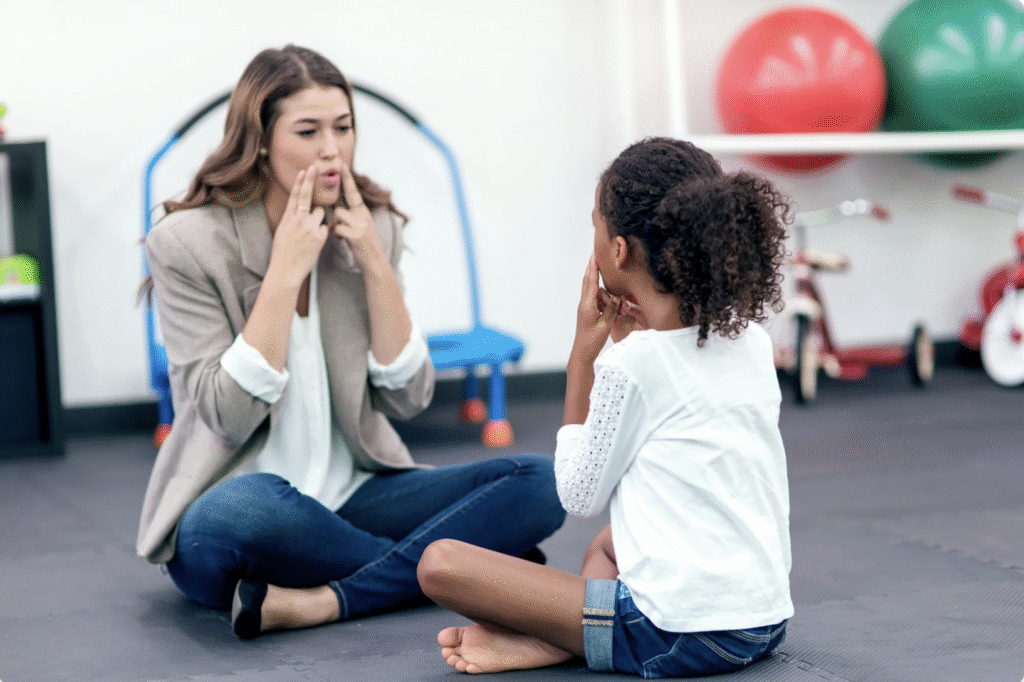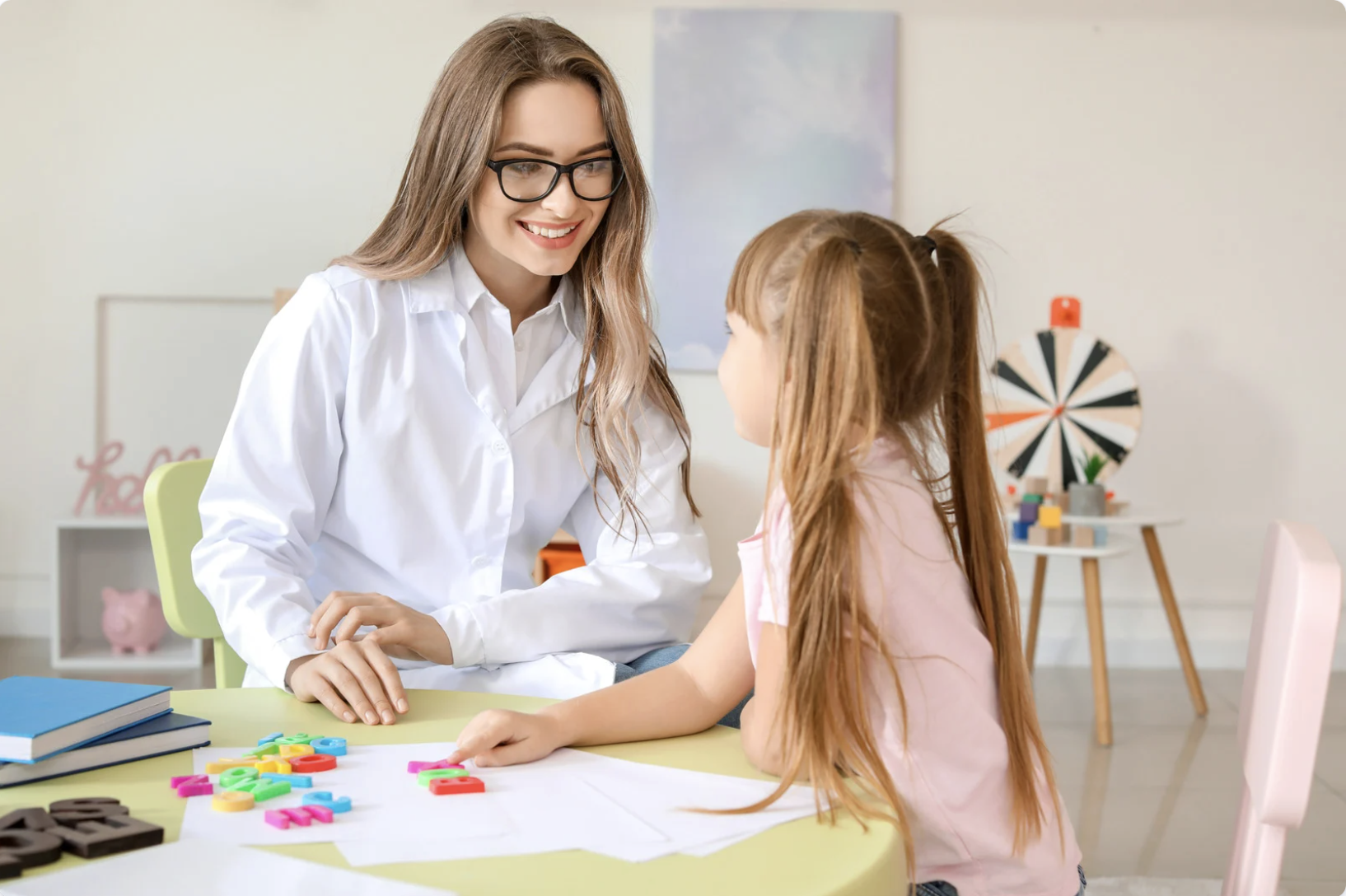WHAT We Do
We specialize in evidence-based communication intervention for children who are non-speaking or minimally verbal.
Our transdisciplinary model brings speech-language pathologists, behavior analysts, and trained technicians together under one roof to create coordinated, individualized programs. By combining the principles of communication science and behavior science, we help children build skills that are meaningful, measurable, and lasting.
For example, we might use what we know about how sounds are produced to teach a child to shape and refine speech sounds — reinforcing small, intentional progress throughout the day and across providers. In other cases, we may systematically program a speech-generating device (AAC) with phrases that replace challenging or unclear communication, helping the child meet their needs more effectively and independently.

HOW We Do
Our model is more than collaboration — it’s true integration – we blend the heart of speech-language therapy with the science of behavior analysis.
Speech Therapy Brings the Heart
Speech therapy brings the heart and ABA brings the Structure should be in a clear table with the speech, ABA, and Transformation sections in a clearer table like the drawing I did the other day.
ABA Brings the
Structure
ABA adds the framework — systematic, data-driven, and measurable. It helps us break complex skills into teachable steps and use objective data to refine therapy in real time. It creates consistency and clarity that allow children to make visible progress.
Together, They Create Transformation
When Speech-Language Pathology and Applied Behavior Analysis work together, powerful things happen. By integrating these disciplines, our team:
- Uses AAC and vocal speech as complementary tools for teaching communication.
- Makes data-informed decisions that enhance therapy.
- Cross-trains every team member so learning stays consistent across settings.
- SLPs apply the science of learning.
- BCBAs deepen their understanding of AAC and language development.
- RBTs learn how to support speech and communication in every interaction.
This transdisciplinary model does more than deliver therapy — it creates a shared language across disciplines, helping children make faster, more meaningful progress.

WHY We Do It
After more than a decade as a behaviorally oriented speech therapy practice, founded under the dual certification of an SLP and BCBA, we’ve seen what happens when silos come down. We’ve built systems, tools, and training that make a tangible difference for families — and now, we’re taking it to the next level.
Our goals are to: (keep the bullet points)
Bring intensive ABA teaching and data collection to communication intervention
Train more professionals to deliver high-quality, individualized therapy
Build a network of research, mentorship, and collaboration that raises the bar for communication outcomes everywhere
This is where we come together — to teach kids, take data, and share what works — continually refining the art and science of helping children find their voice.
